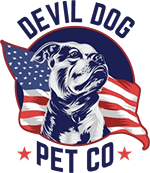As dog lovers, we cherish the special bond we have with our furry friends. The deep connection formed between a human and a dog is truly unique, and one of the most rewarding aspects of this bond is the ability to communicate effectively with our furry friends. But how can we ensure that we're truly understanding their needs and desires? Mastering canine communication is the key to unlocking this door and enhancing the special bond we share with our pups. In this article, we'll explore the fascinating world of dog communication, delving into their body language, and vocal cues, and how you can fine-tune your skills to better communicate with your furry companion.
Understanding Your Dog's Body Language
Dogs are incredibly expressive animals, and their body language is a major component of their communication repertoire. By observing their posture, tail positioning, facial expressions, and ear movement, you can gain valuable insights into their emotional state and intentions. A relaxed, content dog will have a loose, wagging tail, soft eyes, and a slightly open mouth. On the other hand, an anxious, fearful, or agitated dog may exhibit a stiff body, tense facial expressions, and a tucked or rigid tail. Paying close attention to these subtle cues will help you better understand your pup's mindset, and allow you to adjust your interactions to create a more positive and trusting environment.
Using Vocal Cues to Decode Your Pup's Intentions
While body language is fundamental, vocal cues also play a significant role in canine communication. Dogs use a wide range of vocalizations, from barks and whines to growls and howls, to express their emotions and intentions. Familiarizing yourself with the distinctive nuances of your pup's vocalizations can help you better understand their needs and desires.

A high-pitched bark may indicate excitement or playfulness, whereas a low-pitched growl can signal fear or aggression. Whines and whimpers may express discomfort, pain, or a desire for attention. By listening to your pup's vocal cues, you can address their needs more effectively and deepen your bond.
Tuning in to Your Pup's Emotional State
Dogs are emotional beings, capable of experiencing a wide range of emotions, such as happiness, fear, anger, and sadness. Developing a keen sense of your pup's emotional state is essential for effective communication. Observing their body language and vocal cues in different situations will give you a deeper understanding of how they feel in various circumstances. Just like humans, dogs can also pick up on our emotional states – they are naturally attuned to our body language, vocal tone, and energy levels. Being aware of your own emotions and how they may impact your dog is crucial for maintaining a harmonious relationship.
Finding the Right Tone and Volume
When communicating with your pup, it's important to remember that they are more sensitive to the tone and volume of your voice than the specific words you're using. A calm, consistent tone will help build trust and confidence, whereas a high-pitched, excited tone may encourage playfulness and enthusiasm. Refrain from using harsh or loud tones, as these can cause fear and stress for your pup. Consistency is key – using the same tone and volume for specific commands will make it easier for your pup to understand your intentions and respond accordingly.
The Power of Positive Reinforcement
One of the most effective ways to communicate with your pup is through the use of positive reinforcement. This involves rewarding your furry friend with praise, treats, or affection when they exhibit desirable behaviors or respond correctly to a command. Positive reinforcement not only encourages good behavior and obedience, but it also strengthens the bond between you and your pup, creating a more enjoyable and harmonious relationship. Remember to reward your furry friend immediately after the desired behavior is exhibited, as this will help them associate the reward with the specific action
Establishing Clear and Consistent Commands
Developing clear, consistent commands is crucial for effective communication with your pup. This involves using specific words or phrases for particular actions, such as "sit", "stay", or "come". Consistency is key both in the words you use and the way you deliver them. This clarity will help your pup understand what is expected of them and enable them to respond more effectively. Training your pup using these commands from an early age will make it easier for them to learn and retain the desired behaviors.
Understanding and mastering canine communication is a rewarding endeavor that will greatly enhance the bond between you and your pup. By paying close attention to your pup's body language, vocal cues, and emotional state, as well as fine-tuning your own communication skills, you can create a harmonious and trusting relationship that will last a lifetime. So go ahead, unleash the secrets to effectively talk to your pup, and revel in the joy and connection this newfound understanding will bring.






